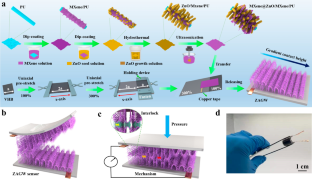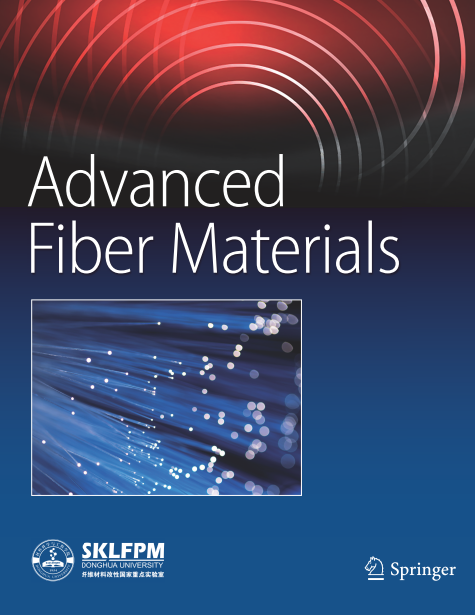Synergy of ZnO Nanowire Arrays and Electrospun Membrane Gradient Wrinkles in Piezoresistive Materials for Wide-Sensing Range and High-Sensitivity Flexible Pressure Sensor
Abstract
Flexible pressure sensors have come under the spotlight because of their widespread adoption in human motion detection and human‒machine interactions. However, manufacturing pressure sensors with broad sensing ranges and large sensitivities continues to be a daunting task. Herein, a pressure sensor based on a gradient wrinkled electrospun polyurethane membrane with MXene-embedded ZnO nanowire arrays (ZAGW) was proposed. Under tiny pressure, dramatic increases in the contact area caused by interlocks of MXene-embedded ZnO nanowire arrays contributed to realizing a high sensitivity (236.5 kPa−1). Additionally, the wide-sensing range (0–260 kPa) came from the fact that a wrinkled membrane with a gradient contact height ensured a continuous contact area change by gradually activating contact wrinkles. Meanwhile, the contact states of the gradient wrinkled membrane at varying pressures were investigated to expound the sensing mechanism of the ZAGW sensor. These exceptional performances enabled the ZAGW sensor to have vast application potential in human motion monitoring and tactile sensing. Furthermore, the ZAGW sensor can be integrated into the sensor array to monitor the pressure distribution. Considering the outstanding performance, the combination of ZnO nanowire arrays and electrospun membrane gradient wrinkles provides an innovative avenue for future sensing research.
Graphical abstract


 求助内容:
求助内容: 应助结果提醒方式:
应助结果提醒方式:


